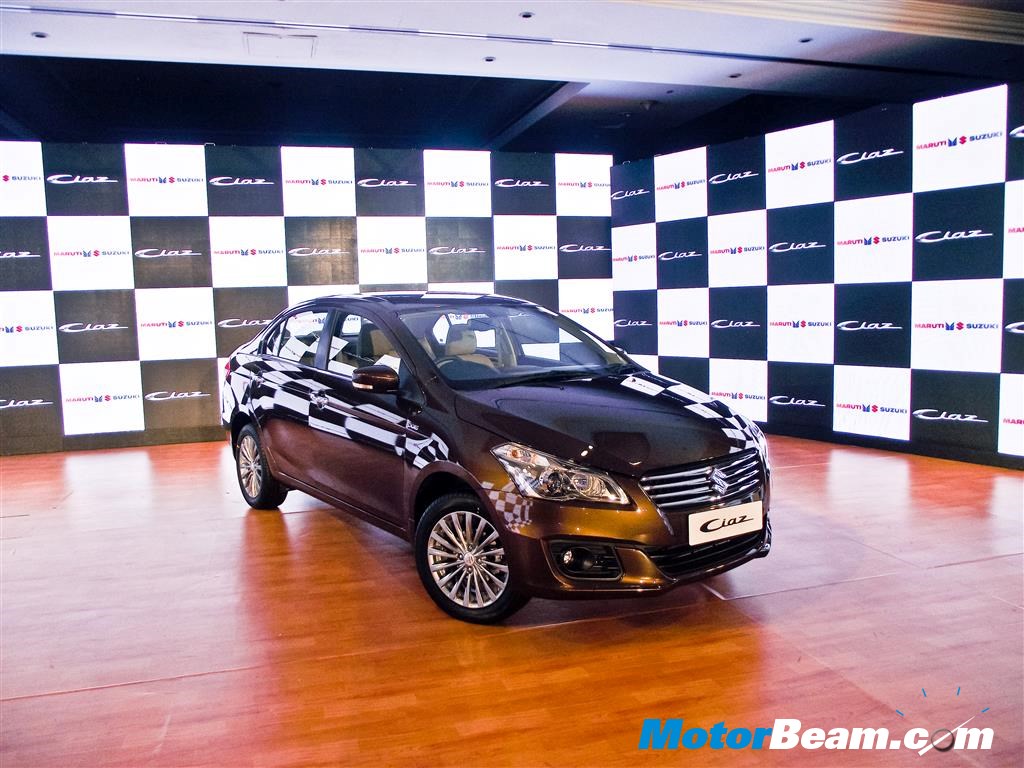The petrol engine gets a newer generation of the SHVS tech
Performance – The 1.3-litre, DDiS diesel motor on the 2018 Maruti Ciaz is the same as before and produces 88.5 HP and 200 Nm of peak torque. Although it has a Smart Hybrid Vehicle System (SHVS), it is not the same as the on one on the new petrol engine. This engine is quite noisy and has a lot of turbo lag but offers good performance in the mid-range and scores high on the efficiency front. The new engine is a 1.5-litre, K15 petrol motor that for the first time comes with an SHVS. The SHVS on this one has a lithium-ion battery and in total, it produces 103.5 HP and 138 Nm of peak torque. This is an increase of 13 percent in power and 6 percent increase in torque figures than the earlier engine.
The 4-speed AT isn’t very quick, takes its sweet own time to shift cogs
With the petrol engine, the manual gearbox offers more punch
Coming to the real-world performance, the petrol motor feels very refined at low RPMs but becomes coarse post 4000 RPM. It has a punchy low-end but the mid-range is flat. The top-end is the same as any other naturally aspirated Japanese motor and it screams. The red-line comes in at 6500 RPM for the manual variant while for the automatic variant it is nearly at 6000 RPM. But this extends to about 6500 RPM in ‘L’ and ‘2’ modes. The manual gearbox is the one with more life here simply because of its slick shifts and a light clutch. The automatic gearbox is slow to upshift and downshift and you cannot take manual control of things.
The new SHVS tech comes with regenerative braking
Both the engines come with class-leading mileage figures and make the 2018 Ciaz, India’s most efficient sedan in its segment. The petrol engine returns 21.56 km/l and the diesel motor returns 28.09 km/l. This is partly thanks to the SHVS system that basically helps in three things, switching off the engine while at a traffic signal, regenerative braking which recharges the battery under braking and torque assist in which the system assists the engine in performing better. However, not much could be felt when we drove the 2018 Ciaz.
The ride is excellent but handling isn’t that great
Driving Dynamics – Maruti claims to have made changes to the suspension of the 2018 Ciaz. Not to say that it was uncomfortable earlier but the changes make the ride even plusher for the passengers. We could easily feel it during our stint with the new model and it rides well for the most part. It is only on really bad roads and deep potholes that a thud could be felt inside the cabin. The suspension setup is very apt for the Indian road conditions but this also takes a toll on the handling. Body roll is considerable and no feel and feedback from the steering makes matters worse. It simply refuses to weigh up at high speeds and centre at low speeds but the good thing is that the car feels planted. The stopping power from the front discs is good and the brakes a fine job of bringing it to a halt within a short distance.



